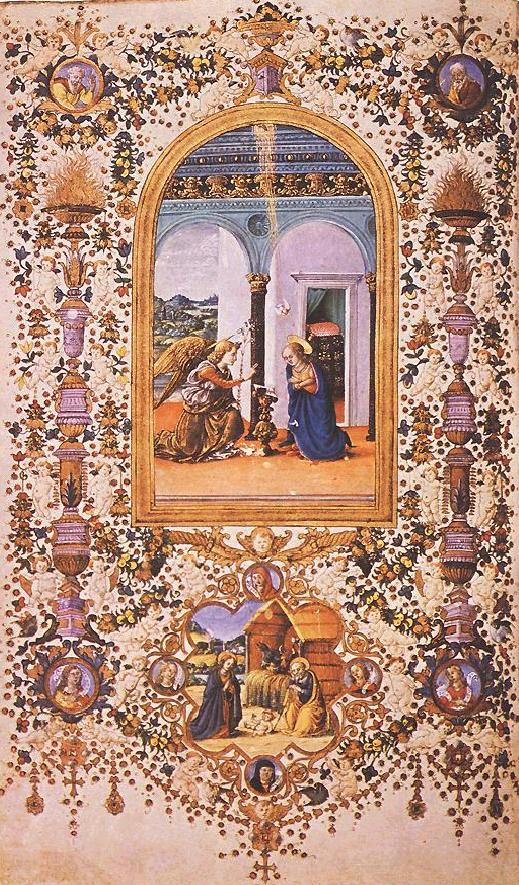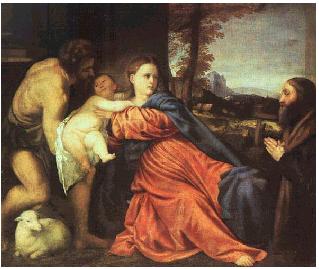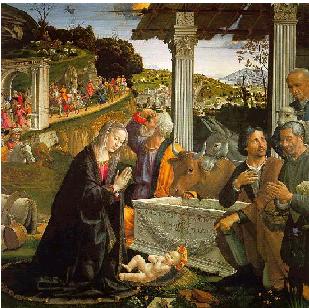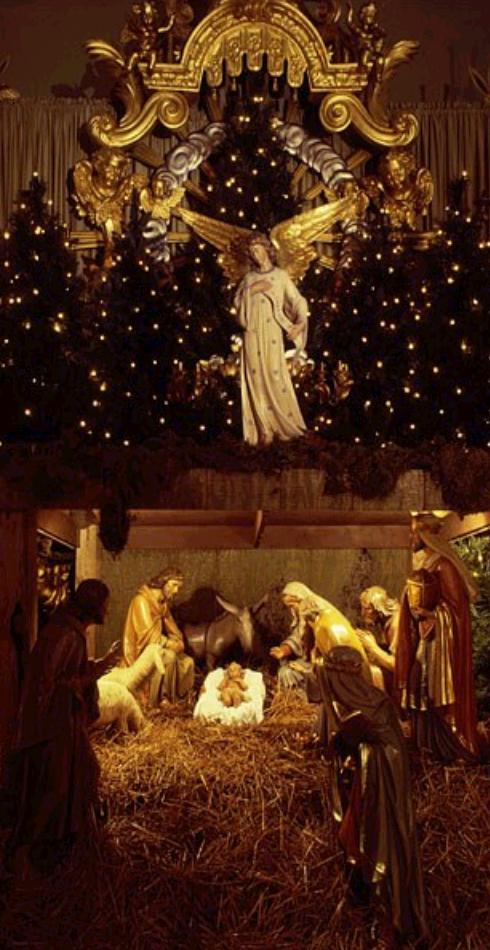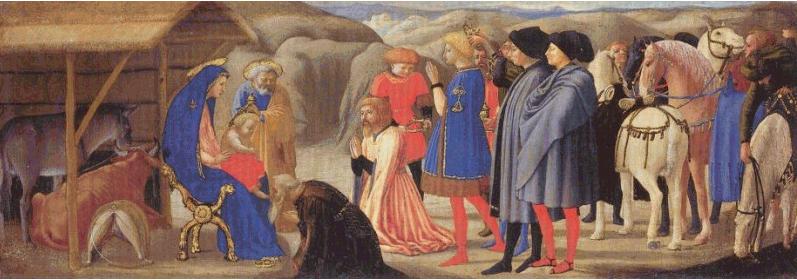
Candida Martinelli's Italophile Site

Main
Page This family-friendly site celebrates Italian culture for the enjoyment of children and
adults. Site-Overview
Giotto's
Nativity: Birth of Jesus fresco (200 x 185 cm) from 1304-06 in the
Cappella Scrovegni (Arena Chapel) Giotto's nativity illustrates my page with
Saint Matthew's account of Jesus of Nazareth's birth, in Italian and
in English. It is from the gospels of Matthew and Luke that we
have our nativity story today.
This beautiful image by artist Filippino, of Mary praying to baby
Jesus, is one of many on my
Traditional Christmas Card page. I provide some images you
might like to download for use on homemade cards. From that page,
I also link to a shop I set
up at Zazzle with Traditional, religious Christmas cards in English
and Italian. I have a page with images of angels from Italian
art, always a part of any Nativity scene, usually hovering over the
manger. You are free to copy them for your own Christmas messages. On the same page I feature the angels of Italian painter Fra
Angelico, the master of heavenly angels that seem to glow with heavenly,
golden light. Here is Fra Angelico's Angel Gabriel from a painting
of the Annunciation.
Here are some icons you can save and use, if you'd like.
For those who wish to pray in Italian, I have the common Catholic
prayers in English and Italian on my Prayers
page.
Raffaello's Holy Family with Lamb Italy's Fontanini make high quality resin creche / belen / crib /
kerststal ... setting and figurines. The
Fontanini Superstore
sells them online in the US, and
Christmas Central ships them around the world. Lladro sells porcelain nativity
scenes and figurines online from their own site. For a detailed history of
Nativity
Art, visit wikipedia's page. It provides a summary of the
nativity story, and a history of the evolution of Nativity Art.
Wikipedia also has a page just about the
Nativity story
itself, which comes from the gospels of Matthew and Luke.
Sister Wendy's Nativity looks anew at the Christmas story and
invites us to consider the true significance of Christ's life. Her
personal selection of over 40 beautiful paintings from manuscripts held
by the Vatican and Italian State Libraries (many seen here for the first
time) illustrate stories that are familiar to us all, yet whose
significance is so often elusive.
At one time, only religious art was condoned by the powerful
Catholic Church,
so each artist made his obligatory nativity. Actually, private
commissions from wealthy families meant that artists made
hundreds of nativity scenes during their careers.
The Vatican, in 2004, held an exhibit of nativity themed art.
The Archbishop in charge had this to say about nativity art. "These are not just works of
art, but also works of faith. And it is the faith which,
in turn, produces culture". The nativity has been represented in paintings, ceramics,
dioramas, carved images, poetry, literature, song, plays, stained
glass, cardboard...any form
of art you can imagine.
St. Francis of Assisi (1200s) is said to have been the first to create the
nativity scene that today we call a crib or crèche, that is a
tradition at Christmas for many Christians. But the tradition
of setting up a scene with statues and decor was long a pagan
tradition in Italy, meant to honor ancestors. St. Francis
created a nativity scene using real animals (Un presepio vivente), and the tradition is
carried on to this day in Assisi, Italy. Many communities
today do the same, with some actually acting out the Christmas story
with actors portraying Mary and Joseph arriving at Bethlehem, the
holy birth and then the arrival of the three Magi. Some then
recount how Mary and Joseph fled with the baby Jesus to Egypt to
escape Harod's assassins.
In Italian homes, it is common to find a nativity scene at
Christmas. Depending on the ambition of the man of the house,
the nativity scene can be small, or cover the entire dining table.
The presepio tends to get more elaborate as one travels south
in Italy.
The Archbishop said that the crèche (crib, presepio, belen...)
that people set up in their homes, or in churches: "...was more than a
folkloric way to represent Christ's birth. It was designed
as an occasion for meditation and prayer. The addition of
many figures to Nativity scenes reminds viewers that Jesus
arrived in the midst of human activity."
Some people question the presence in the manger of donkeys and
oxen, but the Archbishop explained: "...they [donkeys] were
added, along with the oxen, to echo the words of the prophet
Isaiah: 'An ox knows its owner, and an ass its master's
manger; but Israel does not know, my people have not
understood'." As for the ruins that are often depicted in the background of
nativity scenes, they actually represent something specific: "... The ruin story is that on the night of Christ's birth, the
Basilica of Maxentius in Rome partly fell to the ground. Only
ruins remain today.
To be honest, the most elaborate nativity scenes that I have
ever seen in homes, and in public spaces, have been in Spain, where
a crib is called a Belen (Bethlehem). Spaniards
create what's called historical crèches. You can purchase elaborate pieces for your Belen
at outdoor Christmas markets, including the standard Mary, Joseph,
Jesus, Magi, shepherds, and animals, but also Roman garrisons,
buildings to make the town, working water mills and wells, Roman
temples, synagogues, and the inhabitants of Bethlehem with items
related to their daily occupations.
From a prayer book owned by Lorenzo de' Medici (Il Magnifico)
from 1458. You can read about Lorenzo
on my site. These images are collected from various pages from my site, many
from biographies of artists
that are suitable for young adults and children, too. This
terra cotta 'Nativity' is by Giovanni Della Robbia
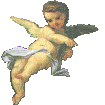
Italian Nativity
Art
![]()


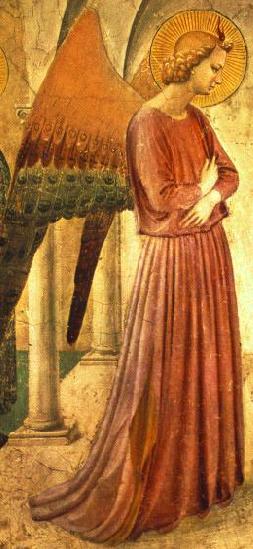
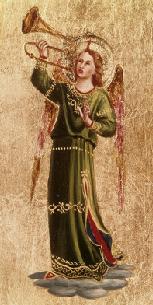




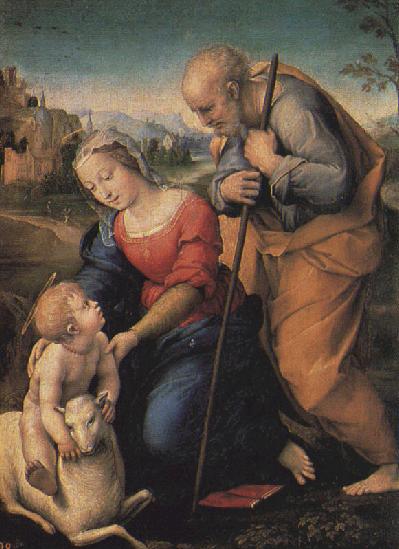
Italy has long tradition of representing the nativity scene of Jesus
of Nazareth, and not just in paintings (many of which are reproduced
below).
The nativity is a classic subject for Italian artists.




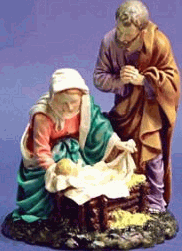
they
depict the ruins of the Temple of Peace in Rome, which according
to an ancient prediction would collapse only when a virgin gave
birth."
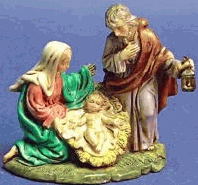
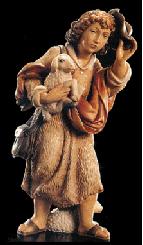
Some Italian
Nativity Paintings
